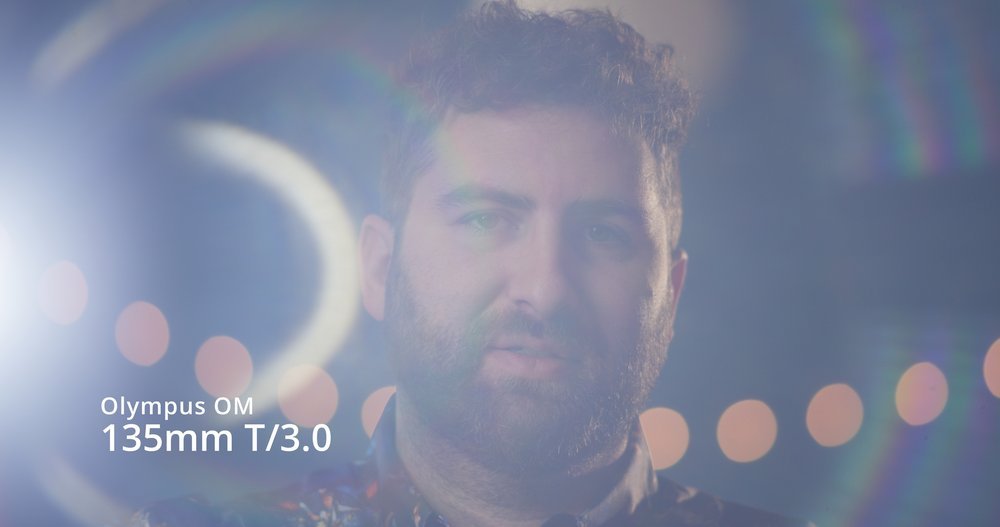Sony Venice 2 - Zero Optik Olympus OM - Full Frame Lens Test
Table of Contents
Today we’re looking at a lens test on the Sony Venice 2. In this test I’m looking at Zero Optik’s rehoused Olympus OM lenses. It should be noted that this is part of a larger overall lens test, and due to the sheer volume of lenses between all 5 sets of lenses I looked at, I did not test every focal length in each set.
Camera Settings:
Camera: Sony Venice 2
Recording Resolution: 8.2K 17:9 (8192 x 4320)
Codec: X-OCN LT
Color processing: Sony S-Gamut3.Cine / S Log3 to Rec709 / Gamma 2.4 color space transform.
ISO: 800
FPS 23.98p
Timestamps
Olympus OM
24mm t/2.2 00:09 - 02:33
40mm t/2.2 02:33 - 05:47
70mm t/2.2 05:47 - 07:26
135mm t/3.0 07:26 - 09:40
180mm t/2.9 09:40 - 12:11
Zero Optik Olympus OM
Lens notes
Olympus OM 24mm T/2.2
The OM 24mm t/2.2 was really impressive with slight vignette around the edges, strong rainbow flares and subtle blooming highlights.
Zero Optik rehoused 24mm t/2.2
Exploded view of the un-rehoused model of the 24mm f/2
Olympus OM 40mm T/2.2
The Olympus OM 40mm has a very pronounced narcissism flare, and some pleasing falloff with a slight coma effect in the bokeh.
What the heck is coma?: Coma is one of the oblique aberrations, which means that it is a defect that does not affect the center axis of the lens, but rather only appears increasingly toward the periphery. Coma is a failure to magnify off-axis light rays passing through a lens equally.
The effect of coma is not constant along the width of the lens. It occurs when light rays enter the lens at an angle near the margins of the lens and, due to a change in magnification, get spread slightly to one side; producing elongated, cone-shaped "tails" that extend radially from bright elements at the edges of the image. These tails look a lot like a comet in the Sky, hence the name: coma. This effect is one that cannot be corrected by simply stopping down the aperture.
Primarily, coma is induced in the image if an element is not perfectly seated or aligned in the lens barrel. If an element is tilted, it can alter the rays of light reaching the imager and cause the “smear” of coma in the highlights. In many cases this is easily corrected by a qualified lens technician who can fix the out-of-place element's seating.
- Jay Holben and Christopher Probst ASC, The Cine Lens Manual (Adakin Productions Press, 2021), p.149.
Olympus OM 70mm T/2.2
The OM 70mm lens was gorgeous, sharp with subtle contrast, with a slight vignette and cat eye bokeh toward the edge of the frame. This lens also had really strong, but less saturated flares.
Very uniform round bokeh wide open, nice skin tone rendition. This lens is tack sharp but has some subtle softness to it with really gorgeous rainbow flares.
Olympus OM 180mm T/2.9
Zero Optik Olympus OM 180mm T/2.9
The 180mm lens may seem like your average telephoto lens, but once you shine a light at it, its real character comes out. Very uniform bokeh with only a slight amount of cat eye distortion toward the edges, especially compared with the 135mm in this set. This lens has some insane flares which is it’s hidden talent. I’ve always enjoyed a 180mm focal length and was pleased to see it in this set.
Final Thoughts
Really interesting flares among each lens.
Interesting and unique focal lengths throughout the set.
Beautiful and compact housing from Zero Optik.
Overall a bit cooler cast and cleaner look to them with a surprising amount of character under the hood.
Olympus OM Description
Olympus OM still photography lenses were announced in 1972, and are unique in that so many of the focal lengths (even the 21mm) are are all f2, all cover full frame, and nearly all of them were designed by the same person: Yoshihisa Maitani. Since most of these lenses came from the mind of one person, it’s a very consistent set in more way than just maximum aperture.
Optically Olympus OM lenses are sharp, with low [chromatic aberration]. They have higher contrast due to their multi-coated optics, but they flare big, and beautifully. Bokeh has more texture than modern lenses. They are also quite small, and very lightweight. They are a very good balance between vintage and modern optics.
All of the lenses are compact, light-weight, and focus very close. The 50mm and 90mm are macro lenses, perfectly suited for normal applications, but are also incredible for macro work.
This actually isn’t the first time Olympus OM lenses were repurposed for cinema. In the 1980s the company Moviecam actually offered prime lenses to accompany their film cameras, and most of them were rehoused Olympus OM lenses, with the exception of a couple that were most likely based on Canon glass.
Exploded view of Olympus 24mm
Olympus OM 135 f/3.5
Olympus OM 50mm f/1.4






























